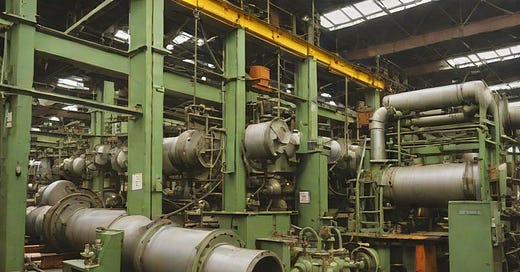QVI Stock Picks Review | Winter 2024 | #7
Quality Value Investing's industrials sector group two updates for CMI, MSM, HUBG, CAT, FERG, and HUBB.
Summary:
Quality Value Investing reviews the performance, current wealth, and present value of 6 of 12 industrials holdings (Group 2 of 2) in the QVI Real-Time Stock Picks.
The companies in Group 2, Cummins, MSC Industrial Direct, Hub Group, Caterpillar, Ferguson, and Hubbell, have high-quality business models supported by below-average to low enterprise downside risks.
Any changes in my views (buy, hold, or sell) are reflected in the QVI Expanded Stock Picks Real-Time Performance Tracker.
When referencing this report, premium (paying) subscribers can access their Quality Value Investing (QVI) Glossary of Investing Terms and Metric Targets. Unless noted, all data presented is sourced from Seeking Alpha Premium as of the market close on March 11, 2024, and intended for illustration only.
In this series, Quality Value Investing reviews the QVI Real-Time Stock Picks by sector to update each holding’s performance, current wealth, and present value.
Today’s post covers six of QVI’s 12 industrials sector picks (Group 2): Cummins, Inc. (NYSE: CMI), MSC Industrial Direct Co., Inc. (NYSE: MSM), Hub Group, Inc. (NASDAQ: HUBG), Caterpillar, Inc. (NYSE: CAT), Ferguson plc (NYSE: FERG), and Hubbell Incorporated (NYSE: HUBB).
Company Current Wealth
To uncover each company’s current wealth, QVI defines the value proposition, measures returns on management, and assesses enterprise downside risks.
Value Proposition
QVI’s value proposition section defines the competitive advantages of each company’s products or services to its customers compared to the industry.
Economic Moat
Morningstar assigns Caterpillar a wide economic moat rating. Narrow moats surround Cummins, MSC Industrial Direct Co., Hub Group, Ferguson, and Hubbell.
Value Proposition Elevator Pitches
Cummins is a trusted truck diesel engine manufacturer that leverages their reputation for customer-driven responsibility and leads the industry transition to low, if not emissions-free, transport.
MSC Industrial Direct is an underfollowed small-cap that distributes metalworking, repair, and operations products and services with growth and profitability.
Hub Group is the number two intermodal marketing company in the freight transportation and logistics services space. It has plenty of opportunity for growth over the longer term despite near-term recessionary fears and the potential effects on the trucking industry.
Caterpillar is a construction equipment manufacturer and one of the world's most valuable and recognizable brands that provides customers with reliable, high-quality products while offering the lowest total cost of ownership.
Ferguson is the largest distributor of heating, ventilation, and air conditioning products to North America's industrial and construction markets. Its stock price has a long history of outperforming the sector and the broader market.
Hubbell is a high-quality, industrial conglomerate that consistently returns cash to shareholders as its shares outperform the benchmarks. The US grid is aging and needs modernization, and Hubbell is a leading infrastructure player in the rare political issue that draws bipartisan support.
Returns on Management
QVI’s fundamentals section measures the performance strength of each company’s senior management by analyzing revenue growth, net profit margin, and returns on equity and invested capital.
Revenue Growth and Net Profit Margins
Cummins, Caterpillar, Hubbell, and Ferguson enjoyed solid double-digit revenue growth during the three-year trailing period. MSC Industrial Direct Co. and Hub Group had mid-single-digit topline increases in the coverage timeframe.
The industrials sector had a +6.05% median revenue growth for comparison.
Caterpillar and Hubbell had double-digit median profit margins in the three-year trailing period. MSC Industrial Direct Co. and Ferguson had mid to high-single-digit margins, while Hub Group and Cummins followed with low-single-digit median bottom lines during the coverage period.
The sector had a +5.94% median net profit margin.
Next, we’ll look at each company’s returns on management and enterprise downsize risks and each stock’s present value, including shareholder yields, valuation multiples, and share price downside risks, exclusive to Quality Value Investing’s premium (paying) subscribers. The post concludes with the updated views on each covered stock.
Keep reading with a 7-day free trial
Subscribe to Quality Value Investing to keep reading this post and get 7 days of free access to the full post archives.






